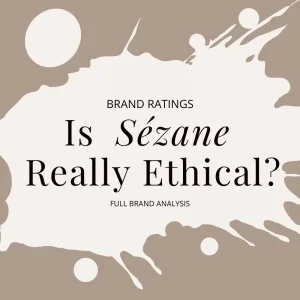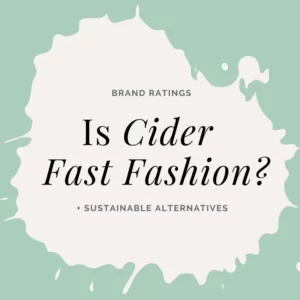We’re reader-supported. The following post contains affiliate links. If you click through a link and make a purchase, we may receive a commission. We only partner with brands who share the same values as we do.
You’ve probably seen BlushMark clothing ads all over Instagram and TikTok. Like Shein, the emerging clothing brand has garnered a loyal following over the last few years. Which is impressive, considering it was only founded in May 2020.
Their suspiciously wide sartorial range includes everything from a “cute” take on loungewear and “novelty” dresses to jumpsuits, rompers, tops, bottoms, and accessories at an average price of $15! Blush Mark caters to Gen Z, with a target audience of 18-25 yearolds, taking inspiration from viral looks on TikTok and IG, as well as jumping on celebrity trends.
When you enter their website, the oh-too-familiar “Hurry! Items are selling fast” notification pops up. Online-only, super-fast, super-cheap fashion is what this brand is all about, just like other notorious fast fashion brands — but this translates to more than 92 million tons of clothes-related waste each year.
Moreover, 57% of all discarded clothes end up in landfills – meaning Blushmark is a major player when it comes to fashion waste.
As you might expect, we’re not giving Blushmark a high rating. Below, we’ll get into the details of why.
Ecothes Opinion: Is Blushmark Ethical?
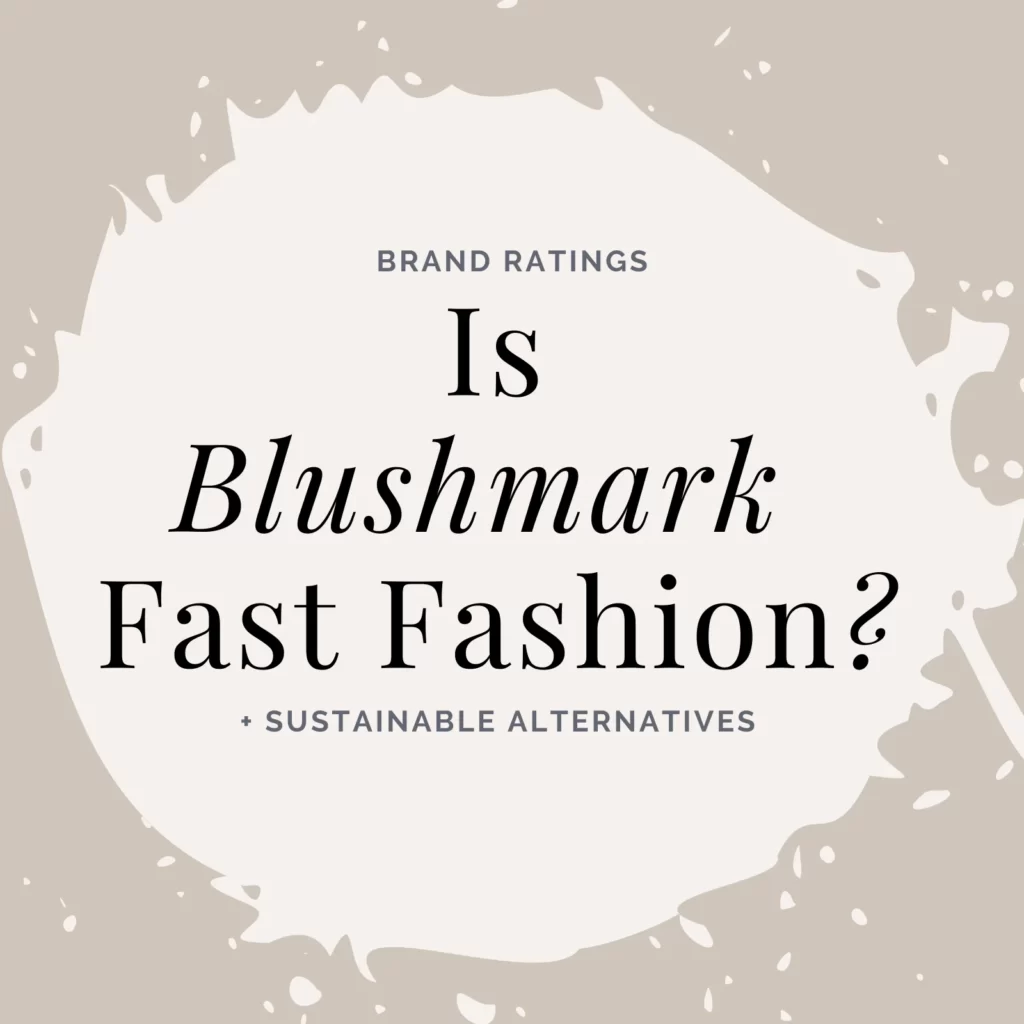
Is Blushmark Fast Fashion?
Yes — Blushmark is a fast fashion brand. Blushmark’s business model is identical to fast fashion brands such as Shein, Nasty Gal, Express, and Zaful. Their trendy clothes are cheap and easily accessible with extremely fast turnarounds.
For instance, a spaghetti strap top is around $6; their dresses retail for $12 bucks, and Blushmark “offers” go as low as $2.99 per item.
There’s also a “Daily New New” category that gets updated every single day with hundreds of new additions. To put it simply, there’s no way to produce that much clothing at such low prices ethically and sustainably.
This fast turnaround heavily contributes to unequal and unfair pay, exploitative working conditions, air pollution, resource waste, and excessive water use.
Fast fashion often relies on cheap labor from countries with lower labor standards, where workers are paid low wages and forced to work in poor conditions. This has led to numerous reports of worker exploitation and human rights abuses.
Conveniently, the listings don’t include the types of materials, only a vague “stretchy fabric” indication that only means one thing: low-quality fabrics that are quite literally laden with chemicals.
What Materials Does Blushmark Use?
- Tencel lyocell
- Viscose
- Modal
- Acrylic
- Wool
- Silk
- Hemp
- Bamboo
- Cork
The Blushmark fast fashion model requires the heavy use of flimsy materials to keep their pricing as low as possible. The company primarily uses petroleum-based fabrics (nylon, polyester, and acrylic) known for leaking waste and toxic substances into waterways, soil beds, and groundwater during their production process.
Synthetic dyes have been found in water, underwater sediment, and fish. Unfortunately, researchers believe these substances’ toxicity and pharmacological tendencies are cause for concern. Let’s not forget that synthetic clothing contributes nearly 35% of all the microplastics in the ocean.
Blushmark only uses a small proportion of organic materials such as organic cotton, cork, silk and hemp, and bamboo or recycled materials such as recycled polyester. A tiny portion of their clothing is also made of semi-synthetic fibers or regenerated cellulosic fabrics such as Tencel lyocell and modal. That’s a common greenwashing tactic we see amongst the top fast-fashion retailers.
If that’s not enough, Blushmark uses wool without stating sources which is undoubtedly a concern.
Is Blushmark Carbon Neutral?
Blushmark is not carbon neutral.
In fact, toxic gasses like carbon dioxide are released every time a new Blushmark item is made, polluting the environment heavily. Unfortunately, we couldn’t find any information on initiatives to become carbon neutral through offsetting or emissions reduction. However, they mention that they’ve taken steps to reduce their carbon footprint and promote sustainability by implementing a program to recycle their own clothing and reduce waste.
Is Blushmark Ethical?
We personally wouldn’t consider Blushmark is not ethical or sustainable simply because the Blushmark Fast Fashion business model cannot be any of these things due to its fast turnarounds. The company mentions that “Blush Mark brand items are made in China and merchandised and managed by the Blush Mark Design team in LA.” That’s because China and China or other Asian countries like India and Bangladesh have low production costs and offer pennies back to the people who made them.
There’s no clear evidence that BlushMark violates some labor laws, but there is also no evidence against it.
In China, 85% of the population living in poverty live in rural areas. Moreover, fast fashion in China is interconnected with human trafficking, specifically forced labor trafficking. To sustain high production, factories choose illegal child labor, which does violate China’s own labor laws.
At one of the factories, workers get a base salary of 4,000 yuan per month — the equivalent of roughly $556 — to make at least 500 pieces of clothing daily. The result? The country produces 70,000 tons of fashion waste daily.
Where are BlushMark Clothes Made?
BlushMark sources its clothing from Chinese manufacturers. However, in a true fast fashion way, BlushMark does not disclose any information about the specific manufacturers. This makes it extremely hard to determine whether or not they follow labor laws.
Is BlushMark Cruelty-Free?
BlushMark is most likely not cruelty-free. According to their website, BlushMark does not test any of their products or ingredients on animals, and they do not commission any third-party testing on animals. Additionally, they state that they do not sell their products in countries where animal testing is required by law. However, some of their clothing is made of wool. We couldn’t find any sustainability certificates from recognized animal welfare organizations, such as PETA, which has strict criteria for companies to meet to be considered cruelty-free.
Sustainable Alternatives to BlushMark
1. Amour Vert
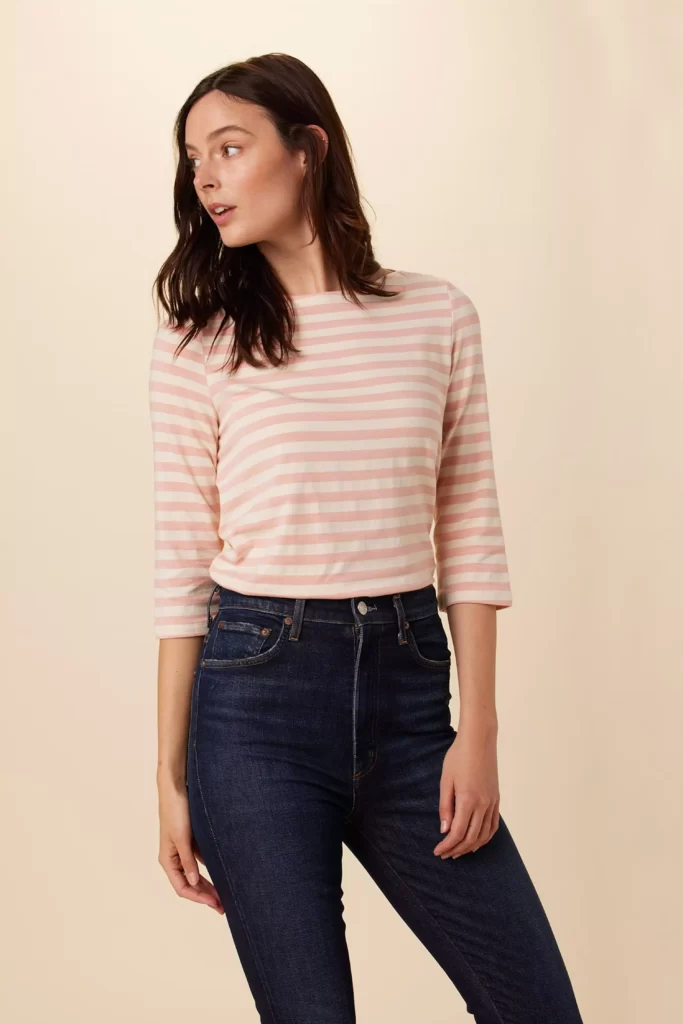
Sustainability: Sustainable Materials, Recycled Packaging, Zero-Waste Manufacturing, Made In Small Batches
Best for: dresses, shirts & blouses
Price range: $$-$$$
Ships to: Worldwide
2. Reformation
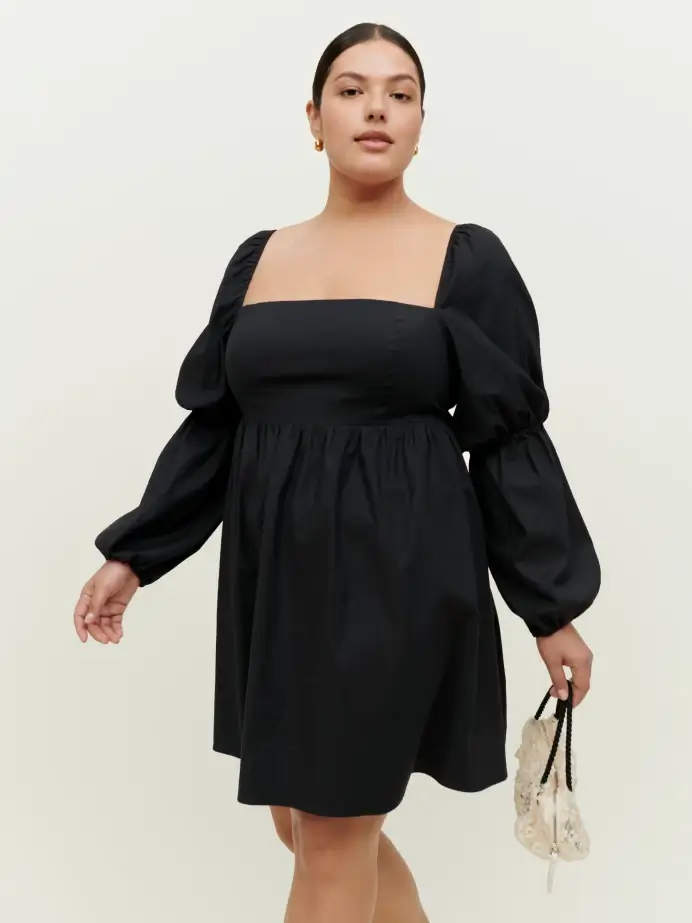
Sustainability: Stylish ethical clothing made with sustainable materials and deadstock materials.
Best for: Dreamy Dresses, blouses, and jeans
Price range: $$-$$$
Ships to: Worldwide
3. Girlfriend Collective
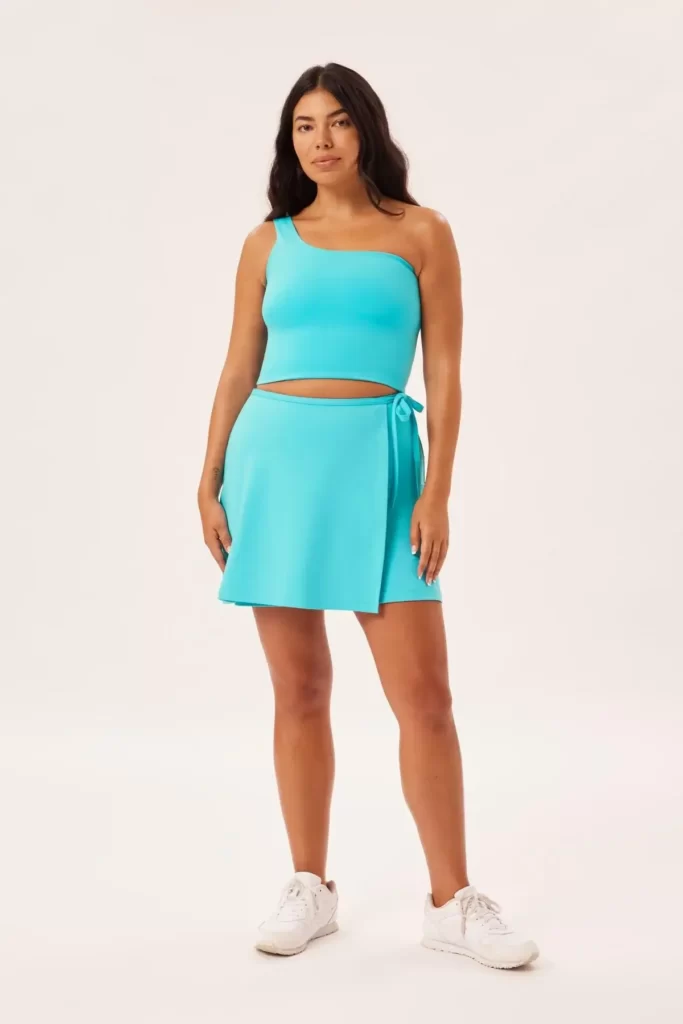
Sustainability: Chic sustainable activewear is made ethically from recycled plastic bottles.
Best For: Cool co-ord sets in dreamy colors, sustainable leggings, and sport bras
Price: $$
Ships to: Worldwide
4. Mate The Label
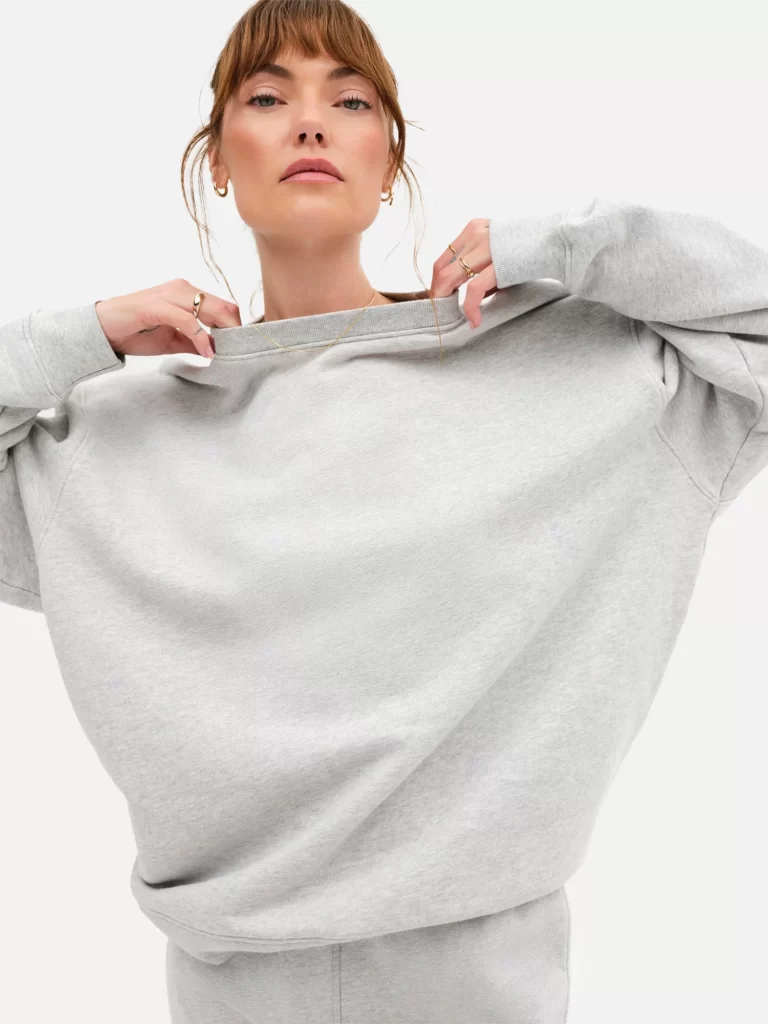
Sustainability: Nontoxic clothing made in the USA from organic cotton
Best for: Loungewear, jumpsuits
Price: $$
Ships to: Worldwide
5. Armed Angels
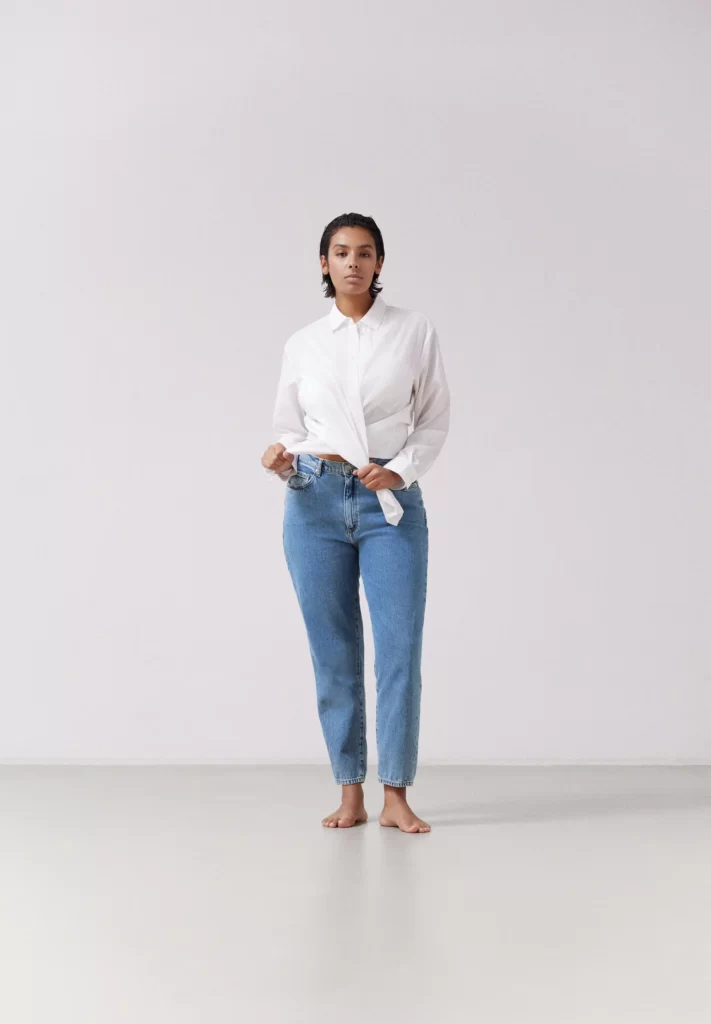
Sustainability: Sustainable Materials, circular economy, Recycled materials, uses Renewable energy Member of the Fair Wear Foundation
Best for: denim, organic underwear & tops
Price range: $$
Ships to: Worldwide
Wrapping Up: Is Blushmark Ethical?
We hope you’ve enjoyed our brand analysis of the ethics of Blushmark. If you’re looking for sustainable alternatives, check out our post on the best affordable, sustainable brands. You can also check out our analysis of Hollister, Banana Republic, Madewell, Aritzia, and Sézane, and a complete list of the worst fast fashion brands to avoid.

